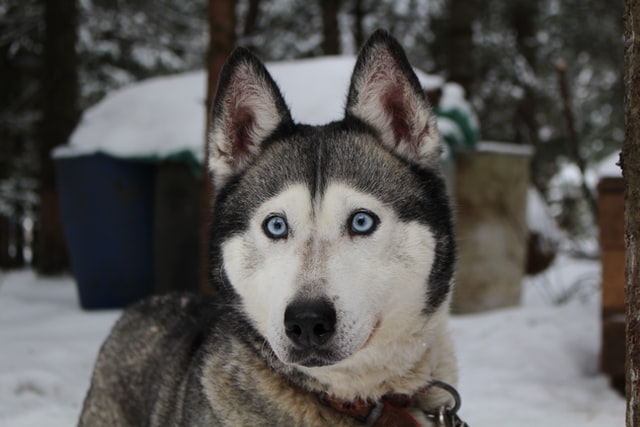It is important to keep your best friend’s house dry and warm to avoid colds and other illnesses in winter. Review the tips and learn how dog houses in winter to have the best shelter from the cold for your dog.
When winter arrives, the cold, humidity, and diseases associated with this time of year make their appearance inside dog houses. And our furry ones also suffer from this season! If your dog sleeps on your patio or terrace, pay attention and learn how to insulate dog houses in winter and leave his shelter dry, warm and cozy.
Contents
Observations on your health in winter
. Some breeds endure the cold better than others. Here, the fur plays a fundamental role: the denser, the more it protects it from low temperatures.
. Large dogs tend to retain heat better than others, also depending on the coat.
. The older the furry, the more sensitive it becomes too extreme temperatures.
. Puppies are not yet 100% immune and susceptible to colds.
. Chronic or specific diseases can accentuate the adverse effects of the weather on your dog.
If you doubt how your furry copes with the cold, do not hesitate to contact your veterinarian for guidance.
How big does my dog’s house have to be?
First of all, you have to worry about the dimensions of your dog’s house. It would help if you considered that this has to adapt to its size:
. If it is very large, the heat that your body gives off will be easily lost.
. Remember that if it is very cold, your dog can be exposed to many injuries and frostbite as well, the main target of this being its tail and the tips of its ears.
Try, then, to choose a dog house where it enters comfortably and has just enough space to stand on its 4 legs and stretch, turn and lie down.
TIP: If you already have a house, it will be good to periodically check that it does not have sharp points, nails that protrude, or cracks so that you do not hurt yourself or enter the cold without us noticing.

Material matters
Essential ones to look for when choosing a house for your dog;
As you can imagine, the house must be robust and solid since it has to withstand the different climates of the year. Various materials achieve this, the most common being wood, resin, or PVC.
Now we tell you the pros and cons of the most common materials in dog houses:
Wood: noble material, it has the advantage of being cool in the summer and keeping warm in the winter. The cons: very sensitive to water and humidity. Protect it with a non-toxic polish (if you bite it), which makes it impervious to water and allows the material to breathe.
Resin: this material is perfect for outdoor houses, as it is waterproof and has insulating properties against ice, cold, and rain.
PVC: It insulates very well from the cold and prevents sudden temperature changes, but unfortunately, it can easily deteriorate (it turns yellow and cracks appear) as time goes by.
Two tips:
. Ensure that the house is not level with the ground, so your dog will have optimal ventilation, and the ambient humidity from the floor or earth will not reach him. Make sure that the legs of the house are made of plastic or metal.
. Choose a gable roof, which makes it easier for the rain to evacuate, made of waterproof material. Locate it away from the wind and in winter, in an area where the sun reaches it.
The design of the house you choose for your furry will depend mainly on your taste. However, it is good that you take these three things into account as well:
- The removable roof (to facilitate cleaning).
- The location of the door (to protect it from the wind).
- The existence of eaves (to shade it and protect it from radiation. solar).
How to insulate my Dog houses in winter?
With all of the above in mind, it is time to review all the details that will help you ensure that your dog’s house is isolated and is a protected and welcoming refuge for your best friend:
. Place plastic at the entrance or install a door if you live in areas with frost or heavy rain.
. If the house has cracks, seal them with silicone or the appropriate material.
. The good idea is to paint the house black for winter. This way, it better absorbs radiation and sun rays.
. Lay a blanket, rug, or cushion on the floor of your house. In addition to being more comfortable, you will be isolating it from the cold.
Insulate the walls. It is very simple, and it is an excellent way to protect the house from the cold.
Here is a step-by-step how to insulate dog houses in winter using recycled materials such as Tetra Pak packaging.
By following these recommendations, we are sure that your dog will be able to spend a warmer and more comfortable winter, as your best friend deserves it!







